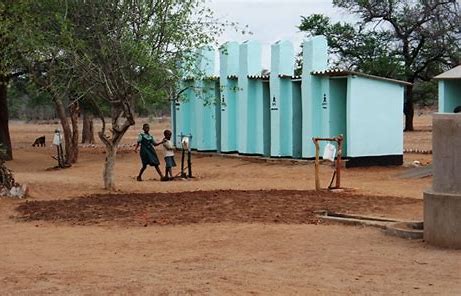Molife Primary School in Domboshava is caught in a crisis that speaks to the broader failure of Zimbabwe’s education funding system. The school, sitting in the fast-growing peri-urban settlement just outside Harare, has over 1,000 students, yet its infrastructure is crumbling under pressure, and its finances have been crippled by unpaid government obligations.
According to our investigations, more than 300 of the school’s pupils are enrolled under the Basic Education Assistance Module (BEAM). The policy is meant to support vulnerable children by covering their school fees. However, the government has not paid a single cent since 2022.
At Molife, school fees are pegged at US$30 per term. With three terms in a year, the arrears owed by government add up quickly:
300 students × $30 = $9,000 per term
9,000 × 3 terms = $27,000 per year
No payment since 2022 = $81,000 in arrears
That is money that could have transformed the face of the school. For instance, a standard classroom block costs around US$15,000–20,000. With $81,000, Molife could have built at least 4 classroom blocks, easing congestion and ending the current hot-sitting system where even Grade 1 learners rotate shifts because of classroom shortages. Alternatively, the money could have purchased thousands of textbooks or built new toilet blocks for the school’s swelling population.
Instead, the school has been left to shoulder the burden of providing “free education” without resources, while paying parents are effectively subsidising the BEAM scheme. “Currently, children on BEAM are riding for free at the expense of those whose parents are struggling to pay,” one teacher said privately.
The school’s sanitation facilities tell a similar story of neglect. Despite government promises, Molife still relies on Blair toilets in 2025. This is in direct contradiction to the 2018 pronouncement by then Minister of Primary and Secondary Education, Paul Mavima, who boldly declared:
“No more issues of Blair toilets at schools. We want to see modern schools even in the most rural areas so that we can be an example of what a new Zimbabwe should be.”
Government regulations once stipulated that schools should maintain a ratio of 1 toilet for every 25 boys and 1 for every 20 girls. With over 1,000 learners, Molife should ideally have at least 20 toilets for boys and 25 for girls. The school has nowhere near that figure. The result is long queues, unhygienic conditions, and health risks that compromise learning.
This raises serious questions: Did government mean it when it banned Blair toilets? When it speaks of Vision 2030, are schools like Molife included in that vision? When the Ministry recently declared that “schools are ready” for the new term, were they referring to schools with overcrowded classrooms, unpaid BEAM arrears, and Blair toilets?
Domboshava’s rapid growth has made things worse. Through the so-called sabhuku land deals, village heads have been parcelling out land to buyers at a fast pace, swelling the population and putting pressure on already fragile services. Molife Primary, originally built for a much smaller community, is now overwhelmed. Over 1,000 pupils are crammed into limited facilities, yet the government has failed to expand or upgrade the school’s infrastructure.
The Amalgamated Rural Teachers Union of Zimbabwe (ARTUZ) has long argued that the BEAM model is broken. It is prone to abuse, riddled with delays, and has left schools stranded for years without payment. ARTUZ proposes an Education Equalisation Fund instead, a mechanism designed to bridge the gap between urban and rural schools, prioritising infrastructure, teaching materials, and teacher welfare.
But beyond alternative models, the union insists that government must honour its own commitments. “If you create a policy like BEAM, you must fund it,” ARTUZ Deputy Secretary General said. “Otherwise, you are crippling schools and leaving children worse off.”
For Molife Primary, the cost is measured in tired teachers juggling overcrowded classes, children sitting on floors for lack of desks, and learners forced to rotate in and out of school because classrooms are too few. It is measured in the daily indignity of queuing for a Blair toilet in 2025, in a country that claims it is on track to become an upper middle-income society by 2030.
Until government takes its responsibilities seriously by paying BEAM arrears, building new schools, and upgrading ablution facilities the dream of free and quality education will remain hollow.
For now, Molife Primary continues to soldier on, carrying the weight of broken promises.

